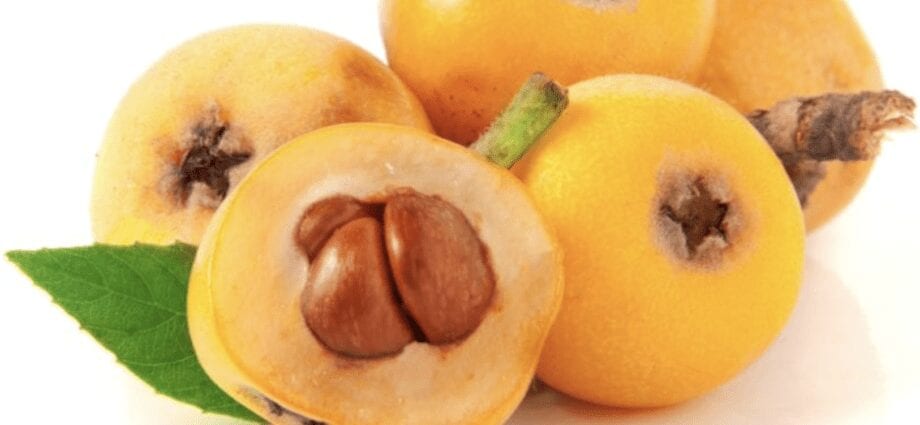Contents
Description
Medlar is a close relative of the hawthorn. The Himalayas, Northern India, and China are considered the homeland of the medlar. It has been cultivated in Japan for a long time. Where, in fact, the name came from.
Among the cultural species, the most widespread are Japanese medlar and German medlar. There are about 30 species of Japanese medlar and more than 1000 of its different varieties, but the German fruit is the only one of its kind.
The difference between the two species is in the ripening time. Medlar, originally from China (but the variety is called “Japanese medlar” – because the fruit got to Europe in a roundabout way) ripens in May, and Germanic – on the contrary, in late autumn.
The Japanese medlar grows in Cyprus. Outwardly, it resembles a yellow plum. This species has a soft skin, bright orange color, the flesh is very tender with a specific pleasant aroma and sweet taste with a slight sourness, at the same time similar to an apple, pear and strawberry. And the more ripe the medlar, the sweeter it is, and the bones are so beautiful that you don’t want to throw them away.
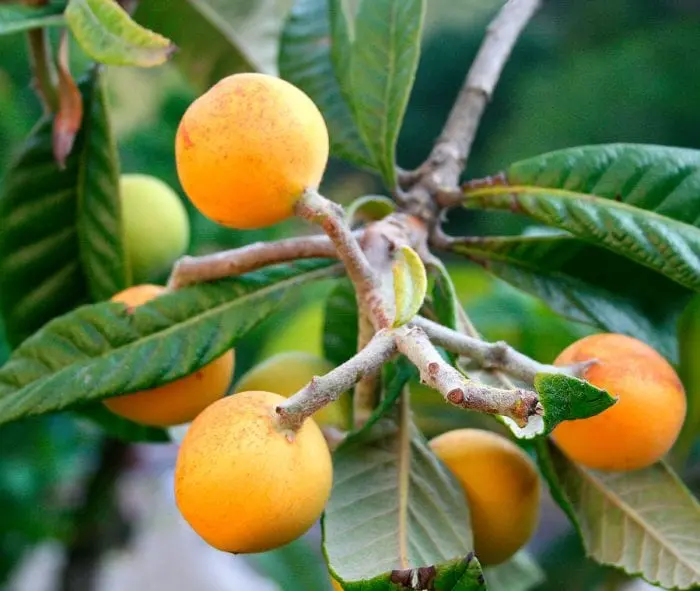
Japanese medlar is a subtropical plant.
It grows in countries with warm climates – where it is quite warm in summer, but not cold in winter either. So, in Cyprus there are just ideal conditions for its cultivation.
Composition and calorie content
It contains selenium, phosphorus, potassium, zinc, as well as iron, calcium, vitamins of group A, B, C, PP. In addition, medlar is not only healthy, but also a medicinal fruit that helps to normalize digestion.
Regular consumption of medlar in food helps with intestinal diseases, is a laxative and general tonic for the human body.
- Calorie value 47 kcal
- Proteins 0.43 g
- Fat 0.2 g
- Carbohydrates 10.44 g
The benefits of medlar
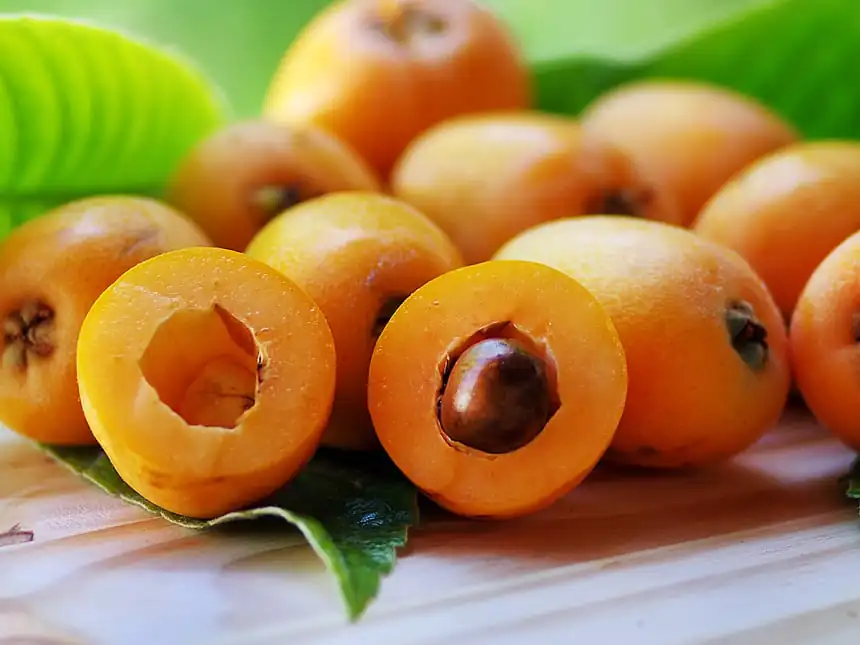
fruits are full of vitamins and more than 80% water. Medlar quenches thirst well, saturates the body with useful substances and contains little sugar, so you can eat it while losing weight. People with diabetes can also eat fruits; the fruits contain a substance that promotes the production of insulin – triterpene. Fruits, leaves and seeds contain:
- amygdalin
- flavonoids
- pectin
- phenolic compounds
- organic acids
- polysaccharides
- tannins
- phytoncides
Medlar strengthens the immune system and is a good natural antioxidant. The bark is used for tanning leather, kitchen utensils and souvenirs are made from wood, seeds are used only in processed form, ground and brewed like coffee, decoctions and tinctures are made from them.
Medlar is used in the prevention and treatment of urolithiasis. Biologically active compounds of pectin, which are part of the fruit, normalize the level of cholesterol in the blood. Due to the content of vitamins A and C in its composition, daily consumption helps to improve the functioning of the cardiovascular and immune systems.

Another undoubted plus of medlar is its calorie content.
Take girls into service – only 42 kcal per 100 grams! It’s just a godsend! It is not for nothing that medlar belongs to the dietary products recommended for weight loss.
In addition, thanks to the medlar, you can become not only slim and beautiful!
From the pulp and juice of the medlar at home, they make excellent masks, creams and lotions that tighten the skin, brighten it, and help cope with acne.
Here are some simple recipes that you can easily prepare yourself at home:

Mask for dry skin.
Peel the fruits, rub the pulp thoroughly until smooth, add a teaspoon of olive oil and apply on the skin of the face and neck for 20 minutes. The mask has a rejuvenating effect.
Mask for oily skin.
Mix the medlar pulp with a tablespoon of kefir and a teaspoon of lemon juice, apply on the skin for 15 – 20 minutes, then rinse with warm water. The mask well cleanses the skin from excess fat, relieves inflammation, tightens.
By the way, in addition to fruits, you can use other parts of the plant. For example, for lung diseases, you can prepare a decoction of flowers. It acts as an anti-inflammatory as well as an expectorant.
It is recommended for asthma, coughs of various natures, chronic bronchitis. An aqueous infusion of leaves is used for gastric and intestinal disorders, diarrhea. It can be drunk with various intoxications and poisoning.
How to choose a medlar
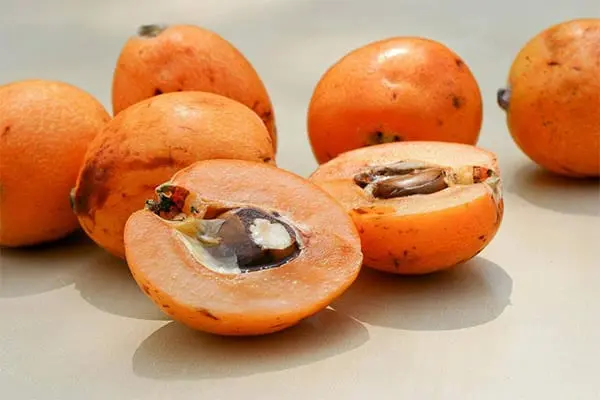
When choosing the main criterion should be a uniform color and no damage. The best quality fruits are considered to be medium in size and not too soft. It is best to eat fresh fruit, after having removed the skin from them, in this case we will get the maximum benefit from the medlar.
Contraindications
It is not recommended to eat fruits for some health problems:
- increased acidity of the stomach;
- gastritis and stomach ulcer during an exacerbation;
- diseases of the pancreas.
- Children, in order to avoid an allergic reaction, can eat no more than 2 fruits a day, adults – 4 fruits.
Medlar in cooking
Jam, jams, compotes are cooked from the fruits, juices, kvass, liqueur, wine, fruit salads, sauces, sherbet are prepared, used as a filling in baking.
Jam from medlar and pumpkin seeds
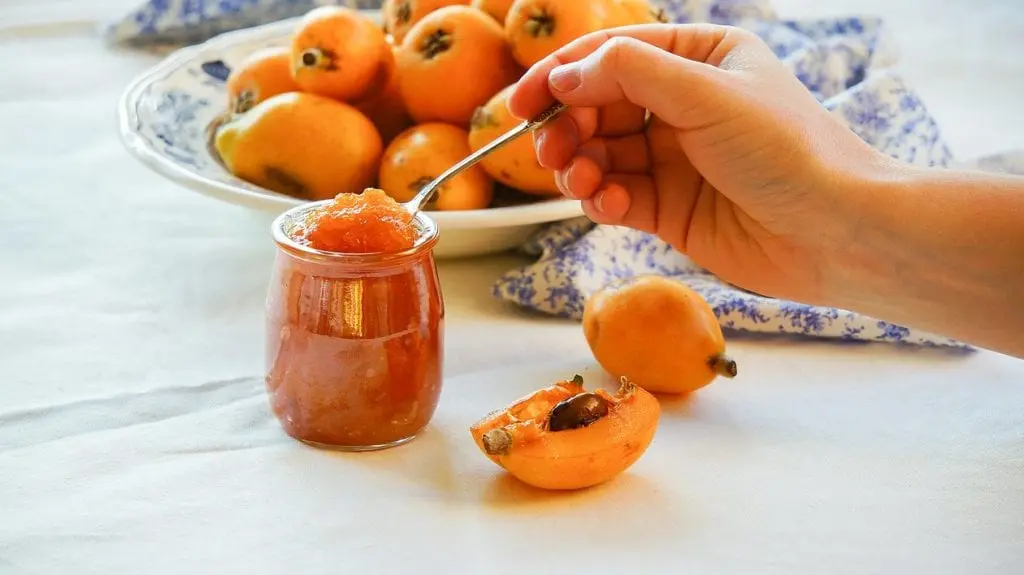
Ingredients:
- 1 kg of fruit
- 300 g sugar
- 4 tbsp. l. pumpkin seed
Preparation:
Peel the medlar and mix with sugar, place in the microwave for 10 minutes.
Take out the mass and add the pumpkin seeds.
Transfer to a saucepan and cook on the stove over medium heat, stirring occasionally, until the syrup is 1/3 full.










